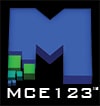Stealth Hypersonic Spacecraft Civilian Transport Vehicle
This invention concept pertains to a stealth spacecraft that can travel through regular airspace at hypersonic speeds, and then enter space, and travel to a distant planet such as Mars, carrying 4-8 crew members, with various types of propulsion systems, including electronic supersonic jet engines powered by a ceasium ion battery compartment the size of a 12V car battery or larger, used to take off vertically, in a containment chamber to protect from any accidental crash, in addition to hypersonic jet engines to get into space or travel around the world in hours, using conventional jet fuel, and an ion drive in space, in addition to conventional thrusters for space propulsion, in addition to a different configuration of the hypersonic engines for space, which would allow faster space travel while still having the power of a thruster. The entire spacecraft would be made from carbon fiber materials, and would include an ejection pod for the space crew or flight crew. The vehicle could be used to fly astronauts or civilian visitors to a space outpost in orbit around the moon within a 12 hours. The spacecraft could be used to travel to Mars within 3-6 weeks, depending upon the proximity of the planet to the current travel trajectory of Earth to Mars, and vice versa, based on a forward looking scale of time.
The spacecraft would have an oxygen saturation system that would convert the air into oxygen by removing the carbon dioxide, and adding pure oxygen, which could be stored in a hardened crystalized substance at cooled temperatures, in space, while pressurized on Earth to -900 Kelvin. The spacecraft would have an automated navigation and propulsion system using specialized Artificial Intelligence. The spacecraft would have the approximate feel of a stealth bomber such as the B-21, however the size of a much larger aircraft, and it would not be used for military purposes. It would have a crew capsule that would extend upwards above where the flight cabin is of the B-21, which would be able to compact when in flight, and extend in space, to bring up living quarters. The crew would be lying down backwards while flying the vehicle into space, and then would be able to stand up while the spacecraft is in space or within orbit.
The spacecraft could carry experiments, and would have vertical landing gear, that could land on a planet, and withstand the gravity of Mars of the spacecraft’s weight on Mars. It would also have landing gear that folds inwards, infinitively, to an extent, and stores the air for the tires in separate compartments in space, to store the oxygen for the tires in the oxygen tanks, to re-compress when landing back on Earth, so the landing gear is folded into small compartments in space, to allow for more space for living quarters. The fuel tanks for the Jet fuel would shrink over time, allowing more space for living quarters. The spacecraft would also have propulsion would could be used with a nuclear battery, powered by electricity, only. Thus, the fuel could be saved only for takeoff and landings, and for gaining high-speed travel, and thrusting.
There would be shielding that would protect from collisions, including electronic technologies that would shoot propellants at colliding objects, or use ray beams of a sort to keep objects away from the craft while it travels, far in advance to being within range to collide with them, including small objects less than a grain of salt in size. The propellants for large objects would actually move large objects out of the way, like a Chaffe engine, or a little missile that moves a large asteroid out of the way, and is only used for that purpose. It could be entirely electronic. These technologies would be useful in satellites as well, to keep them replenished with replenishable robotics launches.
The living quarters would have water and food, and exercise equipment, in addition to the beds that they took off in, in addition to computer systems with games and productivity applications. The spacecraft would accommodate a vehicle that detaches from the spacecraft out of the front after landed on the Martian planet’s surface, carrying the entire living quarters. There would be at least seven different landing gear, while four of them, at a minimum, would be for driving the crew capsule. Each landing gear of the aircraft would have 8 wheels, and the crew capsule would have large Martian wheels that would allow travel over the roughest terrain.

















